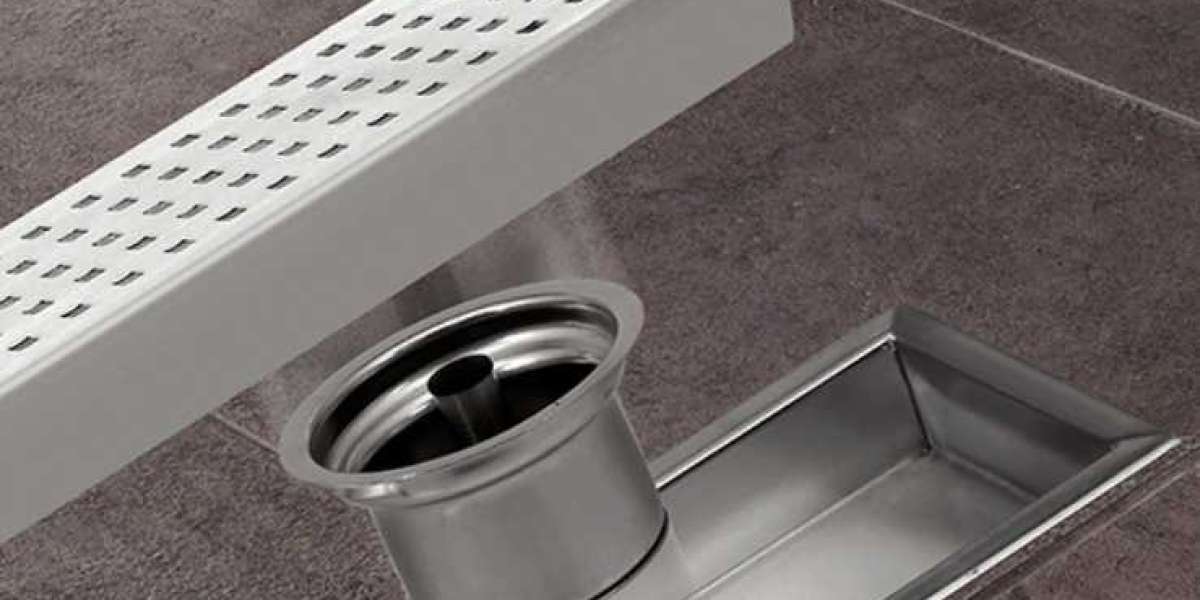Regarding Chinese cooking, the right equipment can make all the difference. The sizzle of a hot wok or the gentle simmer of a clay pot brings out flavors that keep you coming back for more. But how do you choose tools that last? With so many options available, selecting durable materials is essential for achieving authentic results in your kitchen. Whether you're a seasoned chef or just starting your culinary journey, understanding what makes materials stand the test of time will elevate your cooking experience and ensure each dish tells its story. Let’s dive into Chinese Cooking Equipment and discover why materials matter!
Advantages of Stainless Steel in Durability and Hygiene
Stainless steel is a standout choice for Chinese Cooking-Equipment due to its impressive durability. Unlike other materials, it resists rust and corrosion, ensuring that your pots and pans can withstand the rigors of daily use. This resilience means they can last for years or even decades without showing significant wear.
Hygiene is another critical aspect of stainless steel's excellence. Its non-porous surface prevents food particles and bacteria from sticking, making cleaning effortless. You can use soap and water without fear of damaging the material, which helps maintain a safe cooking environment.
Moreover, stainless steel doesn't react with acidic foods like tomatoes or vinegar. This characteristic preserves the flavors of your dishes while keeping them safe from metallic taste contamination. With this combination of strength and cleanliness, it's no wonder many chefs prefer stainless steel in their kitchens.
Benefits of Cast Iron for Heat Retention
Cast iron is a powerhouse when it comes to heat retention. Its thick walls and heavy construction allow it to absorb and hold heat for extended periods, making it perfect for searing meats or simmering sauces. Once heated, cast iron stays hot, providing consistent cooking temperatures.
This material excels in maintaining even heat distribution across its surface. Whether stir-frying vegetables or slow-cooking a stew, you can trust that the heat will reach every corner of your pan. This reduces the chances of hot spots leading to unevenly cooked food.
Another benefit is versatility. Cast iron cookware works beautifully on stovetops and in ovens alike. You can start a dish on the stove and finish it in the oven without missing a beat. It's an ideal choice for anyone serious about their Chinese cooking adventures.
Role of Carbon Steel in Traditional Woks
Carbon steel is the traditional choice for woks, especially in authentic Chinese cooking. Its lightweight nature allows for quick maneuvers over high heat, which is essential for stir-frying. Chefs can easily toss ingredients while maintaining control, making it a favorite among culinary professionals.
One of the standout features of carbon steel is its ability to achieve excellent heat retention and distribution. This ensures that food cooks evenly without hot spots. As the wok heats up, it develops a natural non-stick surface when appropriately seasoned, enhancing flavor and texture.
Seasoning carbon steel is crucial. It creates a protective layer that prevents rust and adds depth to dishes over time. With proper care, these woks can last a lifetime and improve with each use—truly embodying the essence of traditional Chinese Cooking-Equipment.
Comparing Non-Stick Coatings and Their Longevity
Non-stick coatings are a popular choice for many home cooks. They offer the convenience of easy food release and effortless cleanup. However, not all non-stick surfaces are created equal, and their longevity can vary significantly based on material and manufacturing processes.
Teflon is perhaps the most well-known non-stick coating. While it provides excellent performance at first, its lifespan can be shorter than other options if exposed to high heat or metal utensils. Ceramic coatings have gained popularity as a healthier alternative. They tend to withstand higher temperatures but may wear down over time with frequent use.
When selecting non-stick options, it's crucial to consider how you plan to use your cookware. Regular maintenance, like avoiding abrasive sponges, can extend the life of these surfaces considerably. Choosing wisely means balancing convenience with durability for adequate Chinese Cooking-Equipment.
Heat Distribution Properties of Different Materials
The heat distribution properties of Chinese Cooking-Equipment significantly influence the cooking process. Each material conducts heat differently, impacting how evenly your dishes cook. For instance, stainless steel offers decent conductivity but often requires a thicker base for optimal performance.
Cast iron is renowned for its exceptional heat retention and even distribution. This makes it ideal for slow-cooking techniques typically used in traditional Chinese cuisine. Once hot, cast iron maintains that temperature beautifully, allowing food to develop rich flavors over time.
Chefs favor carbon steel woks because they heat up quickly and distribute heat effectively along their surfaces. This characteristic is essential when stir-frying or tossing ingredients at high temperatures, ensuring everything cooks uniformly without any hotspots ruining your meal.
Impact of Material on Cooking Performance
The material of your Chinese Cooking-Equipment can dramatically influence how food is prepared and the final taste. For instance, stainless steel offers excellent heat conduction but may not provide the same flavor depth as a seasoned cast iron wok. Each material interacts uniquely with heat, affecting searing and browning.
Cast iron retains warmth, making it ideal for slow-cooked dishes that benefit from even temperature distribution. This ability enhances flavors over time, allowing spices to meld beautifully. On the other hand, carbon steel woks respond quickly to changes in heat levels, perfect for stir-frying where high temperatures are crucial for achieving that signature “wok hei” or breath of the wok.
Non-stick coatings simplify cleanup but can suffer under high-heat conditions commonly used in traditional Chinese cooking. Understanding how each material impacts performance will help you choose wisely and elevate your culinary creations.
Common Materials Used in Chinese Cooking Equipment
Chinese Cooking Equipment is crafted from various materials, each bringing unique benefits to the kitchen. Stainless steel is among the most popular choices due to its resistance to rust and corrosion. It’s also easy to clean and maintains a sleek appearance over time.
Cast iron is another favorite, especially for skillets and woks. This material excels in heat retention, allowing for even cooking temperatures ideal for stir-frying or searing meats. The seasoned surface also adds flavor as you cook.
Carbon steel has gained attention, particularly in traditional woks. It offers similar properties to cast iron but with less weight, making it easier to handle while providing excellent heat distribution. Each material is vital in how dishes come together on your table.
Maintenance Requirements by Material Type
Different materials used in Chinese Cooking-Equipment come with varying maintenance needs. Stainless steel, for instance, is relatively low-maintenance. A simple wash with warm, soapy water and a soft sponge usually does the trick. It resists rust and corrosion but may require occasional polishing to maintain its shine.
On the other hand, cast iron demands more attention. After each use, cleaning it without soap is essential to preserve its seasoning layer. Regular oiling helps prevent rust while enhancing its non-stick properties over time.
Carbon steel woks fall somewhere in between. They must be seasoned like cast iron but are lighter and easier to handle. A quick rinse followed by drying over heat can help keep this material from developing unwanted rust or patina that could later affect your cooking experience.
Cost vs Durability Considerations
When selecting Chinese Cooking-Equipment, cost often plays a significant role in decision-making. High-quality materials like stainless steel and cast iron may come with a higher upfront price tag. However, considering their durability can lead to long-term savings. Cheaper alternatives might save you money initially, but could require frequent replacements.
Durability is crucial for any kitchen tool, especially when preparing traditional dishes that demand robust equipment. Investing in durable cookware means fewer trips to the store and less time spent searching for replacements. You'll also enjoy consistent performance over the years of use.
Another aspect to consider is functionality versus aesthetics. A well-made pot or wok enhances your cooking experience and can serve as an attractive kitchen display item. Balancing quality with budget ensures you're equipped with tools that improve culinary creativity while standing the test of time.
Environmental Impact of Material Choices
When choosing Chinese Cooking-Equipment, the environmental impact of materials is an important consideration. Some materials, like stainless steel and cast iron, are more sustainable options. They last for years and can be recycled at the end of their life cycle.
Conversely, non-stick coatings often involve chemicals that may harm ecosystems during production and disposal. With increasing awareness about sustainability, many consumers prefer to invest in cookware made from eco-friendly materials or those with a lower carbon footprint.
The choice of material also affects energy usage during cooking. Efficient heat distribution means less energy consumption, which can further reduce your kitchen's environmental impact. Making informed choices enhances your cooking experience and contributes to a healthier planet.
Conclusion
Choosing the right materials for Chinese Cooking Equipment is essential for achieving excellent results in the kitchen. Each material offers unique benefits, influencing durability and how your food turns out. Understanding their properties, from stainless steel to cast iron, helps elevate your culinary skills. Durability and maintenance are key factors in ensuring your investments last longer while functioning at their best. Knowing what suits your cooking style can enhance your experience, whether you prefer a traditional wok or a modern non-stick option. Moreover, considering environmental impact during selection adds another responsibility to your choices. By making informed decisions based on this knowledge, you’re improving meal quality and being mindful of sustainability in cooking practices.
FAQs
Material selection is crucial for performance and longevity when choosing the right Chinese Cooking-Equipment. Here are some frequently asked questions to help you make informed decisions.
What is the best material for a wok?
The traditional choice is carbon steel, known for its heat retention and ability to develop a natural non-stick surface over time. However, stainless steel options are also available that offer durability without compromising on quality.
Can I use metal utensils with my non-stick cookware?
It's not recommended; metal utensils can scratch the coating and reduce lifespan. Opt for silicone or wooden utensils to preserve your investment in high-quality non-stick pans.
How do I maintain cast iron cookware?
Regular seasoning with oil helps maintain the surface and prevents rusting. After each use, clean gently with warm water (avoid soap), dry thoroughly, then apply a thin layer of oil before storing.
Is stainless steel safe for cooking at high temperatures?
Yes! Stainless steel is designed to withstand high heat without warping or leaching harmful substances into food. It's an excellent choice if you're looking for durability and safety.
Are there eco-friendly materials available in Chinese Cooking Equipment?
Absolutely! Some Chinese Cooking Equipment brands use recycled materials or environmentally friendly coatings to focus on sustainable practices. When shopping, look for certifications indicating responsible sourcing.
Choosing durable Chinese Cooking-Equipment enhances your culinary experience and makes long-term economic sense when considering maintenance and replacement costs.
Related Business Listings |







